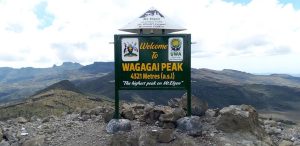
Mount Elgon National park
Mount Elgon National park Uganda Mount Elgon National Park Situated on the Kenyan – Uganda border in Eastern Uganda, Mount
Dubbed the Primate Capital of the world, Kibale Forest National Park is one of the best safari destination in Africa for chimpanzee trekking safaris and hosts the highest number and diversity of primates in East Africa. The park is home to 13 species of primates including the largest population of chimpanzees in the region thriving in an area of 795 square kilometres.
Kibale Forest is one of the most beautiful and most diversified tracts of tropical forests in the whole of Uganda, predominately covers the central and northern part of the park on the raised Fort Portal Plateau. The park lies at an altitude of 1,590m and 1,100 above sea level and is located in the Western part of the country, along the East African Rift Valley near the Ndali Kasenda Crater. Kibale Forest National Park’s varied altitude supports different types of habitat ranging from tropical forest to woodland and savannah on the rift valley floor.
Established as a forest reserve in 1940s, Kibale was upgraded to a national park status in recognition of a biodiversity that includes 350 tree species, 71 species of mammal and 370 bird species. Kibale Forest National Park is best known for its primates which include chimpanzees, the localized red colobus and L’Hoest’s monkeys.
Wildlife in Kibale Forest National Park
Kibale Forest hosts a variety of wildlife species, including 70 mammal species, 13 primate species and 325 bird species inhabiting under its canopy. Notable wildlife in Kibale Forest National Park include the remarkable chimpanzees, olive baboons, red colobus, black and white colobus, L’Hoest’s, red-tailed, vervet, and blue monkeys, and the Uganda mangabey.
Other wildlife species include forest elephants, duiker, bushbuck, sitatunga, bush pig, giant forest hogs, common warthogs, and African buffalo. Predators found in the forest include leopard, several, African golden cat, mongooses, otter and occasionally visiting lion.
Birdlife in Kibale Forest National Park
Kibale Forest National Park has 375 recorded species including the Red-winged Francolin, Green-breasted Pitta, Joyful Greenbul, White-bellied Crested Flycatcher, Woodland Warbler and Orange-tufted Sunbird. Four species: Nahan’s francolin, Cassin’s spinetail, blue-headed bee-eater and masked apalis among others.
The Bigodi Wetland Sanctuary and the stretch of the forests bordering both sides of the road to the Kanyanchu Tourist Centre are normally the most productive birding spots in the park.
Flora in Kibale Forest National Park
Kibale Forest was initially protected as a logging reserve in 1930s and as a national park since 1993, the forest has over 351tree species, the oldest and tallest specimens reaching 200 years and 55 metres.
75% of Kibale Forest’s vegetation is forest with grassland savannah appearing on summits and ridges. The park’s topography determines the nature of forests, with swampy areas in valley bottoms and drier variation on the slopes.
Chimpanzee trekking is the popular activity to do on a Uganda Safari in Kibale Forest National Park, this primate walk provides the chance to observe chimpanzees in their natural habitat. The Kanyanchu troop has been accustomed to human presence and have been observed for over 25 years and the chance of locating them is over 90%.
Chimpanzee trekking walks leave Kanyachu Visitor Centre at 08:00 and 14:00 and lasting between 2-5 hours. All visitors must attend a briefing session at the park headquarters through which a ranger guide takes you through rules and regulations to follow while in the presence of the gorillas. Your time with the chimpanzees is limited to only hour and the group size is limited to only six visitors per group, all participants must be aged 16 or over.
Chimpanzee Habituation Experience
Chimpanzee Habituation Experience (CHEX) gives visitors a chance to accompany researchers and habituates into the forest. The chimpanzee groups involved in this experience are less accustomed to human presence than those visited on the chimpanzee trekking and following and visiting them is challenging as well as exciting.
The Chimpanzee Habituation Experience last for a full day starting at 0630
Guided Nature Walks
Guided nature walks is an opportunity to enjoy one of the most beautiful and varied forests in East Africa without pressure to locate chimpanzees or tick off a dozen of special bird species of Kibale. Guided nature walks are also ideal for young visitors unable to take park in chimpanzee trekking and chimpanzee habituation experience. The experience lasts for two hours and begins at 08:0, 10:00 and 14:00 from Kanyanchu Tourist Centre.
Night Walks
Venture into the forest after dark to search for nocturnal creatures such as galago, potto and bushbabies. Night walks in Kibale Forest National Park are conducted from 19.30 – 22:00 daily.
Birding
With over 372 forest, grassland and swamp species of birds including local endemics and central Africa special, Kibale Forest National Park is a popular destination for birders. Birding in Kibale Forest offer incredible sighting of several bird species including Abyssinian Ground thrust, African Grey Parrot, Black Bee eater, Black capped Apalis, Black eared Ground Thrust, Blue Breasted Kingfisher, Blue headed sunbird, Brown Chested Alethe, Brown Illadopis, Collared Apalis, Crowned Eagle, Dusky Crimsonwing, Little Green Bul, Purple breasted Sunbird, Red Chested Owlet, Red Faced Woodland Warbler, Scaly breasted Illadopsis, the African Pitta, Western Nicator, White naped Pigeon, Yellow Rumped Tinkerbird and yellow spotted Nicator among others.
Getting to Kibale Forest National Park
Kibale Forest National Park can be accessed by road and air
Road – Kibale Forest’s main hub at Kanyanchu can be reached by a number of routes all on surfaced roads. The most direct route is 335 km is via Fort Portal, 35 km to the north. The park can also be reached from the south via Lyantonde and Ibanda (392km), Mbarara and Ibanda (405km) and Mbarara, Kasese and Fort Portal (525km). All these routes allow a break in Lake Mburo National Park.
Air – Kibale Forest National Park has two airstrips that is Nyakisharara near Mbarara and Kasese Airtsrip in Kasese. The domestic flights to Kibale Forest are operated from Entebbe International Airport and Kajjansi airstrip by AeroLink.
Best Time to visit Kibale Forest National Park
Kibale Forest National Park’s tropical climate and location around the equator ensures that tourism experiences take place throughout the year. However, the dry season is the best time to visit the park that is from December to February and June to September. These moths are characterised by little or no rainfall, thus less mud making it easy to hike through the forest on chimpanzee trekking, birding and guided nature walks.
Accommodation in Kibale Forest National Park
There are several accommodation options in Kibale Forest National Park ranging from budget, midrange to luxury. These include

Mount Elgon National park Uganda Mount Elgon National Park Situated on the Kenyan – Uganda border in Eastern Uganda, Mount

Rwenzori Mountains National Park Uganda Rwenzori Mountains National Park The Rwenzori Mountains are one of the most exciting and challenging
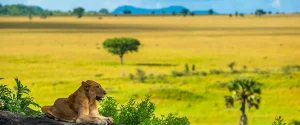
Kidepo Valley National park Uganda Kidepo Valley National Park Located in Uganda’s remote north east corner, Kidepo Valley National Park
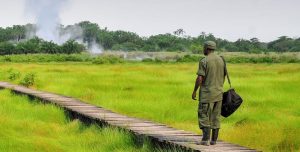
Semuliki Nationl park Uganda Semuliki National Park Semuliki Valley National Park is the first protected Area in Uganda and one
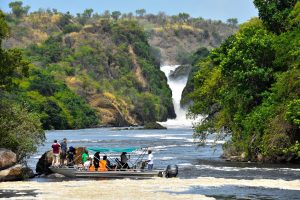
murchison falls national park Uganda Murchison Falls National Park Murchison Falls National Park is one of the most stunning and
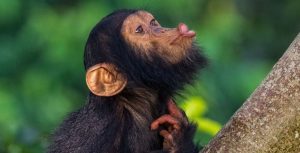
Kibale forest national park Uganda Kibale forest national park Dubbed the Primate Capital of the world, Kibale Forest National Park

Queen Elizabeth National Park UGANDA Queen Elizabeth National Park Queen Elizabeth National Park is the most popular safari destination in
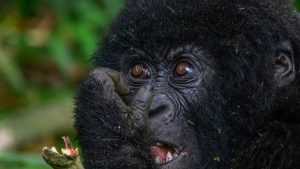
Mgahinga Gorilla National Park Uganda Mgahinga Gorilla National Park Tucked away in the southwestern corner of Uganda, Mgahinga Gorilla National
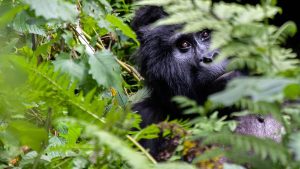
Bwindi Impenetrable National Park Uganda Bwindi Impenetrable National Park Bwindi Impenetrable National Park is a prime gorilla destination in Africa